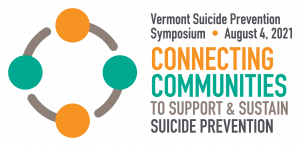Presented by: Tom Delaney, PhD, Logan Hegg, PsyD, and Rachael Comeau, Ed.D
Rates of intentional self-poisoning, a common form of self-harm in young people, have increased substantially in recent years in Vermont and nationally. In Vermont, between late 2020 and early 2021 the incidence of intentional self-poisoning has increased even more rapidly, possibly due to impacts of COVID-19. Primary Care Providers (PCPs) and Behavioral Health Providers (BHPs) play important roles in preventing and responding to intentional self-poisoning behaviors. These roles include identification of risk, advising youth and their caregivers, counseling on safe storage of substances that could be used for self-poisoning, initiating and referring for treatment, and providing follow-up care. Despite the importance of these roles, many PCPs and their behavioral health colleagues do not feel adequately prepared to address self-poisoning in their patients and clients. The first part of this workshop will provide participants with essential background knowledge about intentional self-poisoning in young people and review educational and other prevention-related needs that have been identified. In the second part, clinicians who are experienced in addressing the mental health and health care needs of young people who have self-poisoned will share their practices and insights for supporting patients and their caregivers on the road to recovery. Recent guidance from the US Substance Abuse and Mental Health Services Administration and other agencies will also be reviewed. Perspectives from young people who engaged in self-harming behaviors will be included.
At the end of this session attendees will be able to:
- Describe recent trends in intentional self-poisoning behaviors in youth in Northern New England and the US.
- Evaluate the educational and material needs that providers have regarding how to best address intentional self-poisoning in young clients/patients.
- Summarize treatment approaches and best practices for addressing youth intentional self-poisoning in clinical settings.

